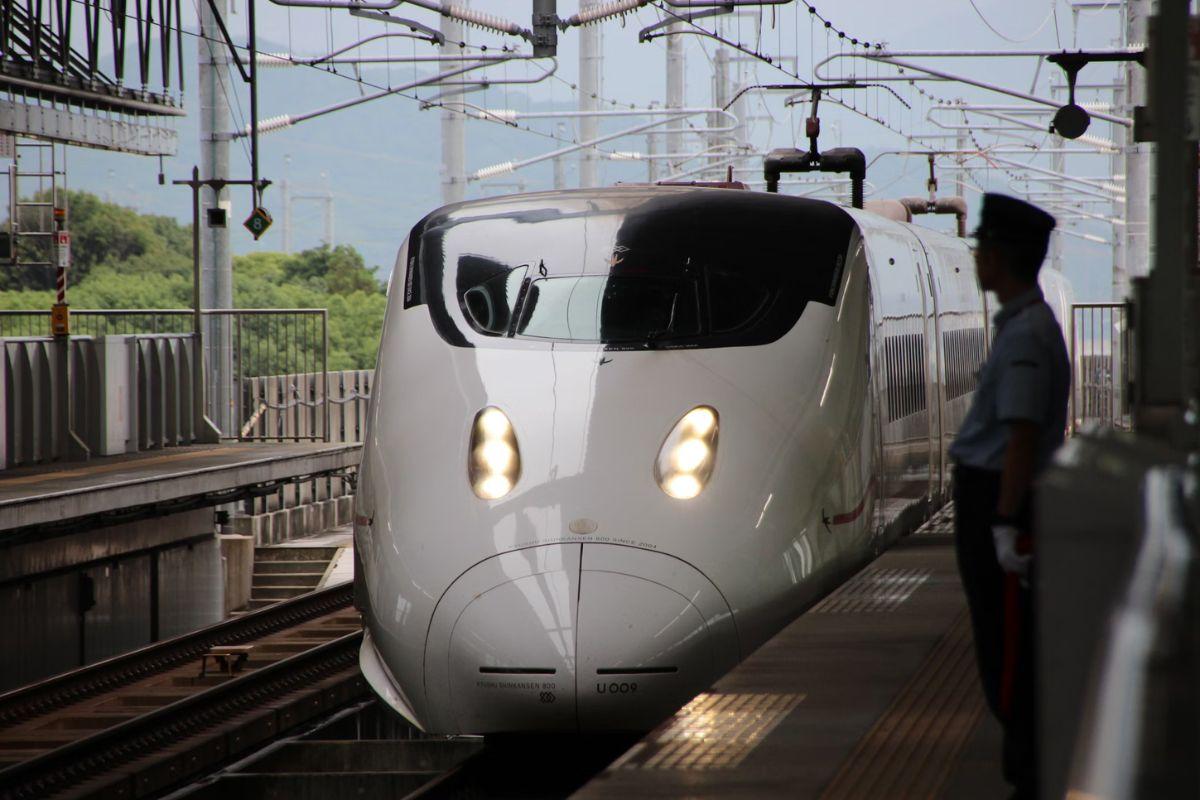Japan is a country known for its efficient and extensive public transportation system. With a network that includes trains, buses, and subways, travelling in Japan is a breeze for both locals and tourists alike. Explore the ins and outs of how to travel in Japan using this Japan public transportation guide with different kinds of public transit, and learn more about the rich culture of public transportation in Japan.
The History of Public Transportation in Japan

Japan’s public transportation system dates back as early as 1872 with its first railway line that linked Shinbansi and Yokohama. Bicycle production in Japan occurred in 1890, and cars were built in the early 1900’s. The country’s first subway line, the Tokyo Metro, opened in 1927, marking the beginning of Japan’s journey towards building a world-class transportation system which you will be learning about in this Japan public transportation guide.
Over the years, Japan has continued to invest in upgrading and expanding its public transportation infrastructure, with the introduction of high-speed Shinkansen bullet trains in the 1960s revolutionizing long-distance travel in the country. Since then, Japan has become a world leader in public transportation, with a network of high-speed trains, subways, buses, and ferries that connect even the most remote parts of the country.
Understanding how to navigate Japan’s public transportation system is essential for travellers visiting the country. As a traveller in Japan, keep in mind the different kinds of public transportation, how to use them, and which one works best for your itinerary. Furthermore, you can read our insider tips on travelling in Japan.
The Main Modes of Public Transportation in Japan

The Train System
Trains in Japan have earned a reputation for being efficient, punctual, and an integral part of the country’s transportation system. With a system that spans the entire country, Japanese trains are a preferred mode of transportation for both locals and tourists. The majority of the trains in Japan are operated by the government-owned company Japanese National Railways or JR Group.
The Shinkansen, also known as the bullet train, is a high-speed rail network that connects major cities across Japan. With speeds reaching up to 320 km/h (200 mph), the Shinkansen allows passengers to travel long distances in a fraction of the time it would take by car or plane. This forms the main part in any Japan public transportation guide.
Walking

Despite the country’s advanced public transportation system, many Japanese people still prefer to walk as their primary means of getting around. One of the reasons why walking is so prevalent in Japan is due to the country’s urban design.
Many Japanese cities are densely populated with narrow streets and crowded sidewalks, making driving a car challenging and time-consuming. As a result, walking becomes a more efficient and convenient option for navigating through the labyrinth of streets and alleyways.
Many neighbourhoods have designated walking paths and pedestrian-friendly zones where residents can gather and socialize while taking a stroll. Walking is not just a practical way to get from point A to point B in Japan, but also a way of connecting with the world around them.
Car

Despite the extensive public transportation system in Japan, owning a car in the country is still a viable option for many people, especially in rural areas where public transportation may be limited. Having a car also provides the flexibility and convenience of beintravellingany time and to any destination without being bound by a timetable.
Cars in Japan are not just a mode of transportation, but a symbol of the country’s dedication to innovation and precision. Japanese cars are known for their high quality, cutting-edge technology, and exceptional reliability. Companies such as Toyota, Honda, and Subaru have built a reputation for producing some of the most well-made and durable cars in the world.
Bicycle

In Japan, bicycles play an important role in commuting as a practical, convenient, and eco-friendly mode of transportation. Bicycles are a common sight in urban areas as Japan has one of the highest rates of bicycle ownership in the world, with nearly every household owning at least one bicycle.
The country’s well-developed infrastructure and well-maintained bike paths make cycling a convenient and practical way to get around. Japan has designated cycling lanes, making it safe and easy to navigate the cities by bike. Many people prefer the flexibility and freedom that comes with riding a bike, as it allows them to navigate through narrow streets and alleyways that are inaccessible to cars.
Taxi
Taxis in Japan are a convenient and reliable mode of transportation for locals and tourists alike. Most taxis in Japan are black with a yellow stripe along the side, making them stand out on the streets. The drivers of these taxis are usually dressed in professional attire, further adding to the overall clean and respectable image of the service.
Taxis in Japan are required to have meters that accurately calculate the fare based on the distance travelled, ensuring that passengers are not overcharged. Drivers are also required to undergo extensive training and testing before they are allowed to operate a taxi, further ensuring the safety and reliability of the service.

When travelling in Japan, it’s essential to know which modes of public transportation are most recommended for tourists based on accessibility and budget. Once you’ve figured out which modes of public transportation you want to utilize for your trip, here is a guide on how to use them.
The Train System
To begin with, it is important to familiarize yourself with the different types of train services available in Japan. There are several main types of trains in Japan, including shinkansen (bullet trains), limited express trains, express trains, local trains, and subway trains.
Next, plan your route and schedule before starting your journey. Japan’s train system is punctual and operates on a strict timetable, so it is important to know the train schedule and plan your transfers accordingly by checking the train schedules, routes, and fairs through information boards, maps, and signs near the station.

If you are traveling long distances, consider purchasing a Japan Rail Pass, which allows unlimited travel on Japan Railways (JR) trains for a certain period. A 7-day pass costs around €180. For short-distance trips, you can purchase individual tickets, usually at least €1, at the ticket machines or ticket counters in train stations. If you’re planning to ride a Shinkansen, bullet train prices start at €14 and can reach up to €52. Be sure to check the fare and correct train line before boarding the train. As there are often multiple train lines operating on the same platform. Other than that most people have some misconceptions about Japanese trains as well, you can check out our article on the top stereotypes in Japanese bullet trains.
Walking
First and foremost, it is essential to pack light when walking around Japan. Opt for comfortable shoes, preferably sneakers or walking shoes, as you will be on your feet for extended periods. Pack a small backpack with essentials such as a water bottle, snacks, a map or GPS device, sunscreen, and a camera to document your trip.

When planning your walking route in Japan, consider the distance you are comfortable walking each day. As well as the sights you wish to see. Japan offers a vast array of walking trails, from urban city walks through bustling streets to serene nature hikes in the countryside. Research the attractions along your route, such as temples, shrines, gardens, and historic sites, and plan your itinerary accordingly.
Car
To drive in Japan, you must have a valid driver’s license to begin with. Depending on what country you’re from, you can drive in Japan with your own country’s driver’s license or obtain an International Driving Permit (IDP) before traveling to Japan.
From there, you can avail of rent-a-car services such as ORIX and NIPPON, that will provide you with a car within your trip’s timeframe. On average, a rental car in Japan costs €55 per day.

Now that you have a car, it is important to learn the rules of the road in Japan. It is advisable to use a GPS navigation system or a map to help you navigate the roads in Japan to make it easier to find your way around.
When parking, look for designated parking areas, such as paid parking lots or parking garages, to avoid parking illegally and risking a fine. Be aware of parking regulations and toll roads, as well as other traffic laws and regulations. The Japan public transportation guide recommends that you try out public trains instead.
Bicycle
Bike rental services are often found in tourist centers, independent bicycle shops, or accessed through rental apps such as Docomo Bike Share and Hello Cycling. You can easily rent a bike in Japan for €2 per hour, or €11 for a one-day pass.
When biking around Japan, plan your route carefully. Japan has a well-developed network of cycling routes. That too with many dedicated cycling paths that are perfect for riders of all skill levels.
Research the different cycling routes available and choose one that fits your interests and fitness level. Make sure to pack appropriate clothing and gear for the weather. Plus plenty of water and snacks to keep you energized during your ride.

In Japan, cyclists are required to follow the same rules of the road as motorists. Cycling in Japan is generally safe, with drivers being respectful of cyclists on the road. However, it is important to remain vigilant and stay alert to your surroundings at all times.
Taxi
Taxis can be found at taxi stands near train stations, hotels, and other popular tourist destinations. You can also hail a taxi on the street by looking for a taxi with a lit-up sign indicating that it is available. Taxi-hailing apps are also available in Japan as well such as GO Taxi, Uber, and DiDi.
In Japan, taxi fares are typically calculated based ontravellede traveled and time spent in the taxi. The fare is displayed on a meter inside the taxi, so make sure you have enough cash on hand to pay for your ride. A taxi ride in Japan can cost as little as €3 and as much as €31. Credit cards are not always accepted in taxis, so be prepared to pay in cash.

Many taxi drivers in Japan do not speak English. So it can be helpful to have your destination written down in Japanese characters. You can use a translation app or have a map or GPS on hand to show the driver the exact location of your destination.
Happy Japan Traveling with Japan public transportation guide!
Travelling in Japan using its public transportation systems can be an enriching experience for travellers. Especially for those looking to explore the country’s vibrant culture through its cities, landscapes, and tourist destinations. That’s where this Japan public transportation guide helps travellers.
As Japan continues to innovate and improve its transportation infrastructure. The future looks bright for those looking to travel this beautiful country. By learning how to access the different modes of public transportation in Japan. Therefore travelers can make the most of their journey and enjoy all Japan offers.















































